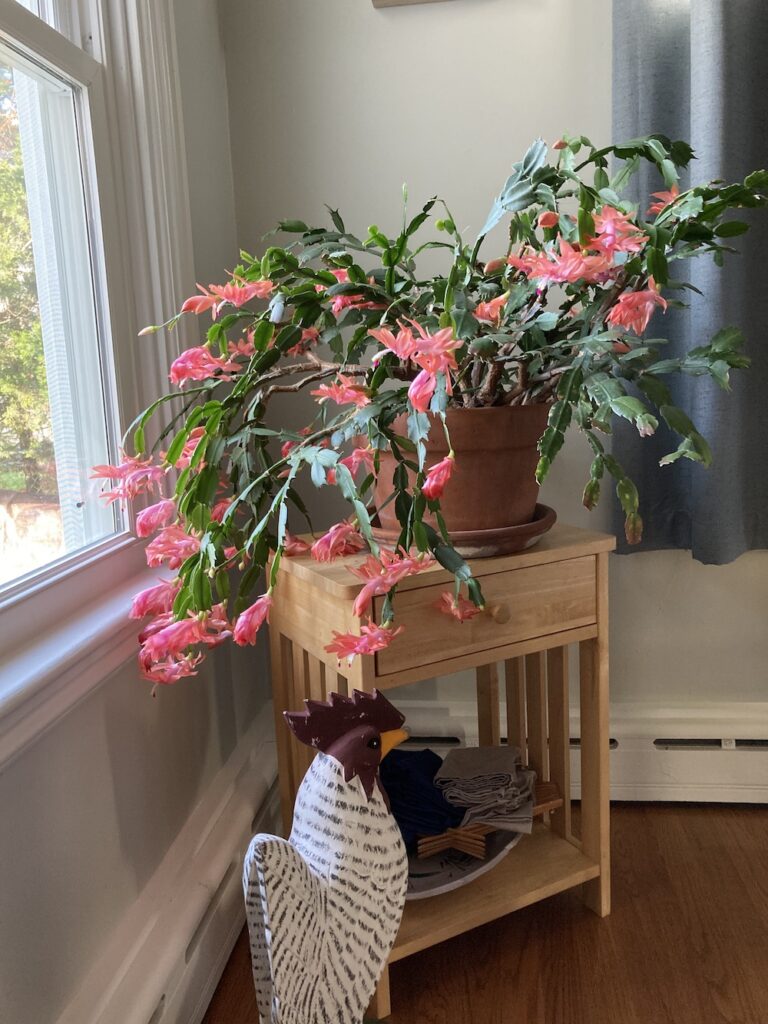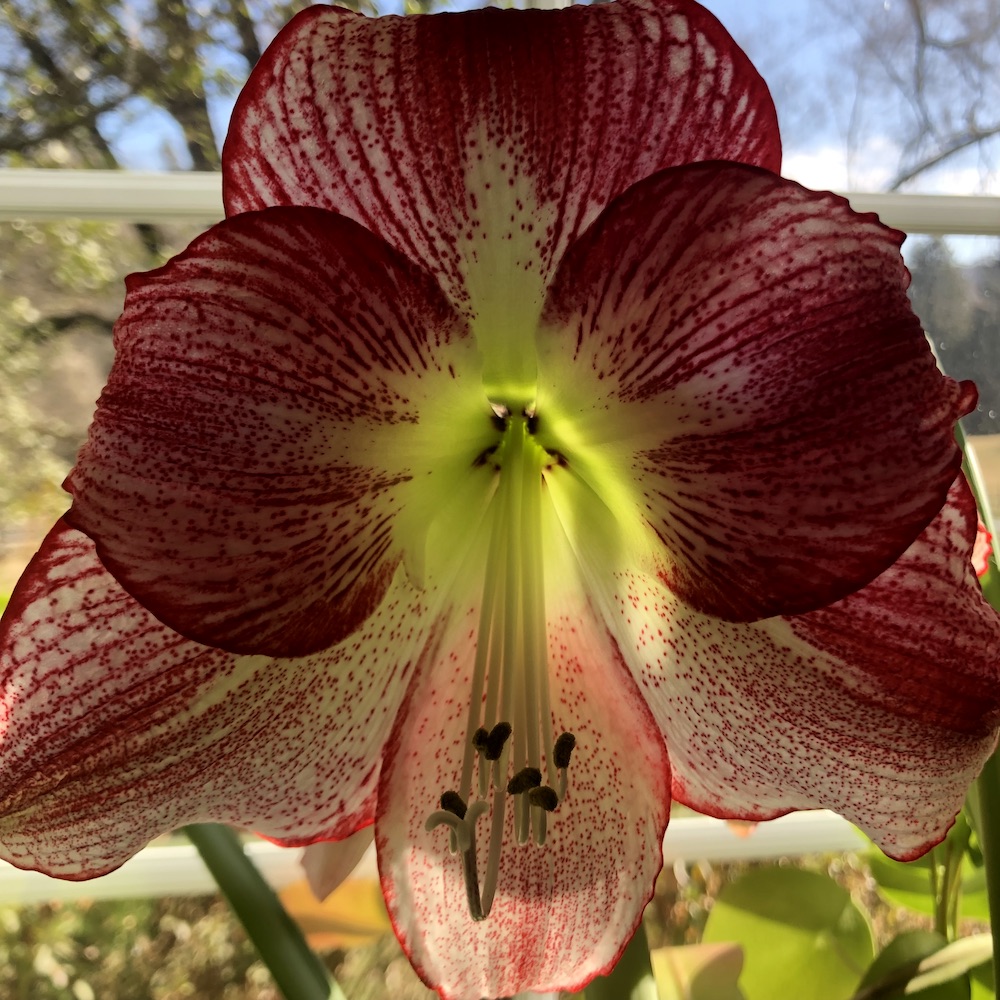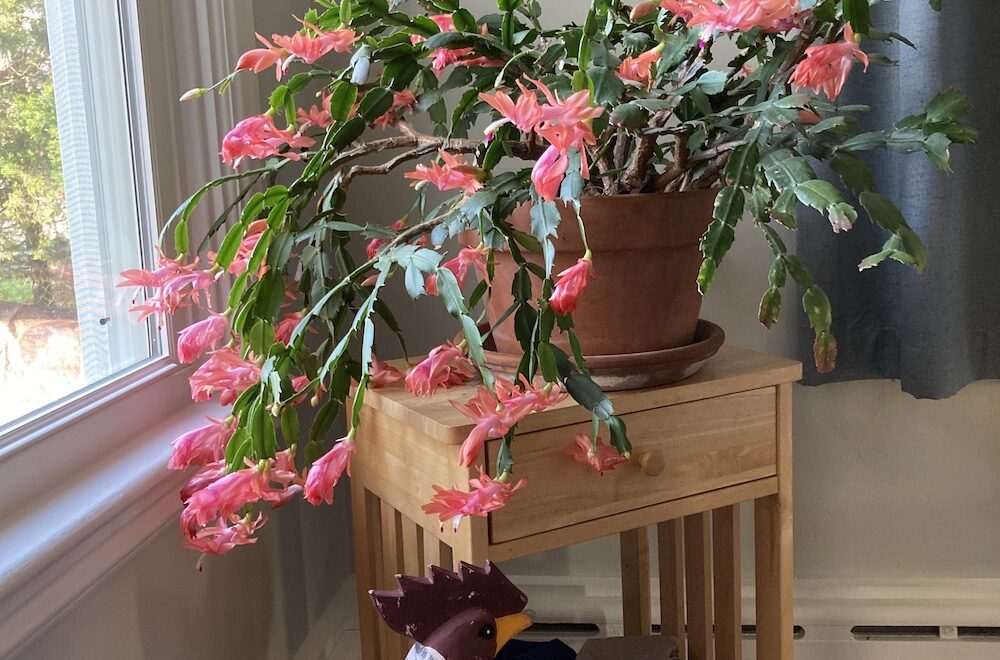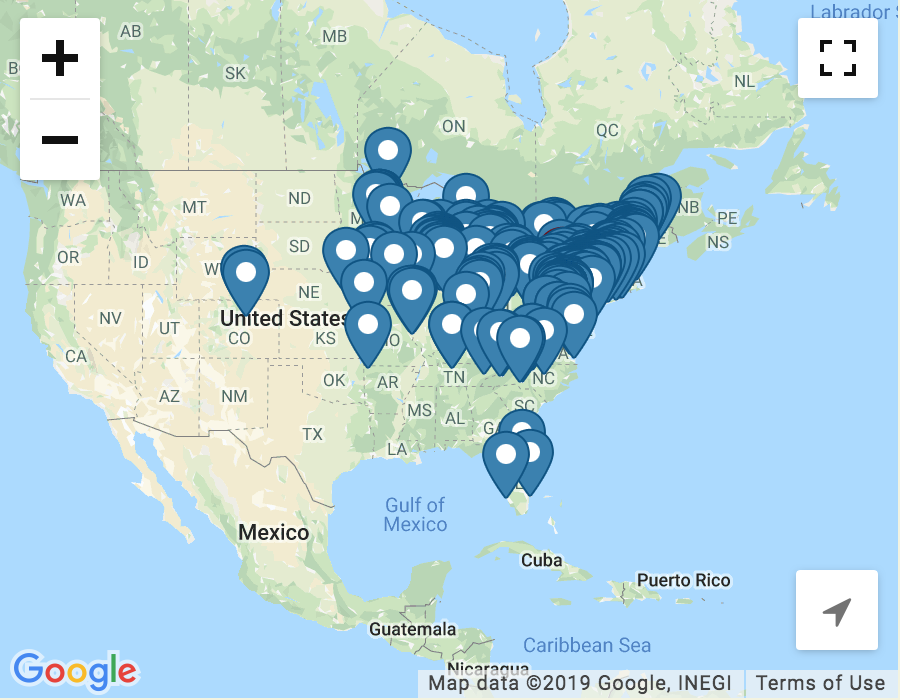If you are anything like us here at Organic Mechanics, you do your best to keep plants living no matter what. You probably even double down on your efforts when it comes to year-end holiday plants because where else do they have to go? The compost pile? Not on your watch.
Keeping plants such as poinsettias and Christmas cacti growing indoors through the winter months can be a struggle. And sometimes the best advice—tossing the weakest among them—is hard to hear. So we’re here to share which holiday potted plants are worth your time and which you’ll be forgiven for if they wither and die. And for the ones you’ll keep, we’ll give you pointers on how to maintain them well into the new year and hopefully beyond.
Holiday Plants to Rescue
The Christmas Cactus (Schlumbergera spp.) and its various iterations (Thanksgiving and Easter) may be the multi-holiday plant with the greatest chance of living for a long while to come. In fact, this specimen pictured is 32 years old!

The beauty of a Christmas Cactus that has become a member of your home is that it may bloom anytime it sees fit. I’ve even seen one bloom in July. Keep it in a bright, indirectly lit location and allow its soil to dry a fair amount between waterings. To initiate flower buds, provide it with 14+ hours of darkness for two weeks and cross your fingers.
If a brilliantly blooming Amaryllis (Hippeastrum) is not adorning a holiday table, its bulb is wrapped up as a holiday gift. Growing an amaryllis is a great way to get kids involved in plant growing. And keeping the bulb after its bloom is gone is a wonderful way to teach them about plant life cycles. Follow some simple instructions, and you’ll be rewarded with a second—and third and fourth—year of these trumpet-shaped blooms.

The most useful of the holiday plants, at least in a culinary sense, is a potted Rosemary (Rosmarinus officinalis). You often seen it dressed up as a Christmas tree this time of year. Cute! But once the baubles and the season are done, simply place it in a sunny window, water when dry, and watch for mealy bugs! Come warm weather, it’ll happily live outside. Your challenge is to keep it Christmas tree-shaped for next holiday season.
You’ll see Norfolk Island Pines (Araucaria heterophylla) adorned in holiday ornamentation, too. It slips naturally into your natural indoor plant décor come January. Just place it in a spot with bright but indirect light and give it some water when the soil feels dry. It could spend the summer on a shady porch and then can once again accompany the Christmas tree next winter.
Holiday Plants for the Refuse Pile
A few holiday plants aren’t as “plug and play” as those mentioned above. The effort to sustain them is much greater than the cost to buy them fresh next season. When it comes to the following plants, we suggest they join potato peels in the compost pile:
The scrawny Poinsettia (Euphorbia pulcherrima) sitting on your desk in May is more of what you’d see poinsettias look like in their natural environments, not the lush, perfectly coiffed plant we typically see.
Cyclamen(Cyclamen persicum), while a beautiful and vibrant-looking plant, loses its vivacity after a couple of months. It’s not a plant that lasts much longer than a holiday season, so keeping it going is more a lesson in futility. Ditch it!
We are nurturing an Amaryllis bulb, so why not Paperwhite Narcissus (Narcissus papyraceus)? Sure, they can be planted outside in spring to grow another day. But they have not been bred to rebloom, as tulips have, and their second round of flowers are quite disappointing. Our advice, ditch it!
Year-Round Care Considerations
You’ll need to give these holiday plants some extra attention as January rolls around because they’ve been grown with the intent of living just a few months. In order of importance, continuing care for these holiday plants includes:
Read up on your plants. Find out how these plants grow in nature. Learn about their preferred growing conditions and plan to recreate that in your home.
Repot! Remember, these plants were initially potted to survive just a few months. Repotting in good and plant-appropriate soil will help them get a great start to a long life. Keeping in mind what you learned in the first tip above, you can repot your Christmas Cactus in our Cactus & Succulent Blend formulated specifically for great drainage and biochar to help retain beneficial biology in the root zone. An Amaryllis or a Rosemary would prefer our Premium Blend Potting Soil. Chock full of compost and worm castings, this Blend is moisture-retentive and an ideal medium for indoor plants. Both of these blends are packed with long-lasting and earth-friendly ingredients—and will help you stick to your “Treat the Earth Better” New Year’s Resolution.
Place them properly. Be sure the amount of light they receive is what they actually need. It’s amazing the impact a few feet closer or farther away from a window can have.
Water them properly. Some plants need more, some need less. Just because you have a watering can in your hand doesn’t mean you have to use it for all your plants on the same day. Make sure to let the soil dry out in between waterings for best results. If you’re using our Rice Hulls as a fungus gnat deterrent, the Rice Hulls also act as a mulch, which reduces soil water loss and can extend the time between waterings while keeping thirsty roots hydrated. Unsure how to determine if it’s time to water? Check out our VINTAGE video on How to Water!
Check the humidity. A home can be super Sahara-like in winter! Search for some humidity-raising hacks to provide an air quality that will suit your plants. Here are some great tips from Gardeners’ World.
Here’s the most important thing to keep in mind: You can do your best, and if it doesn’t work out, you’ll find plenty of Christmas cacti and decorated Rosemary plants on the shelves for the next holiday season.




